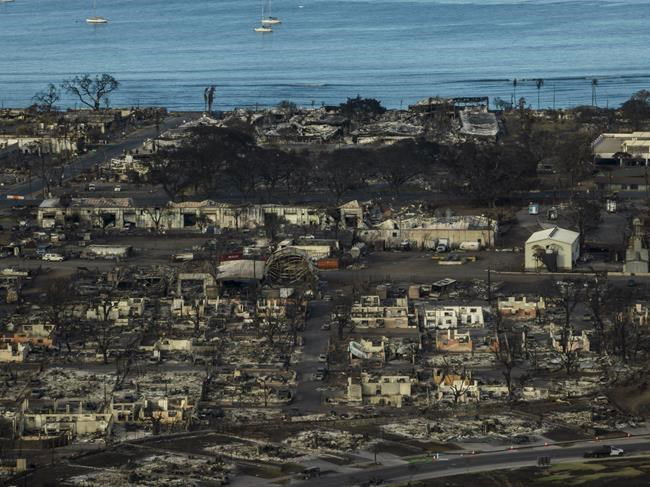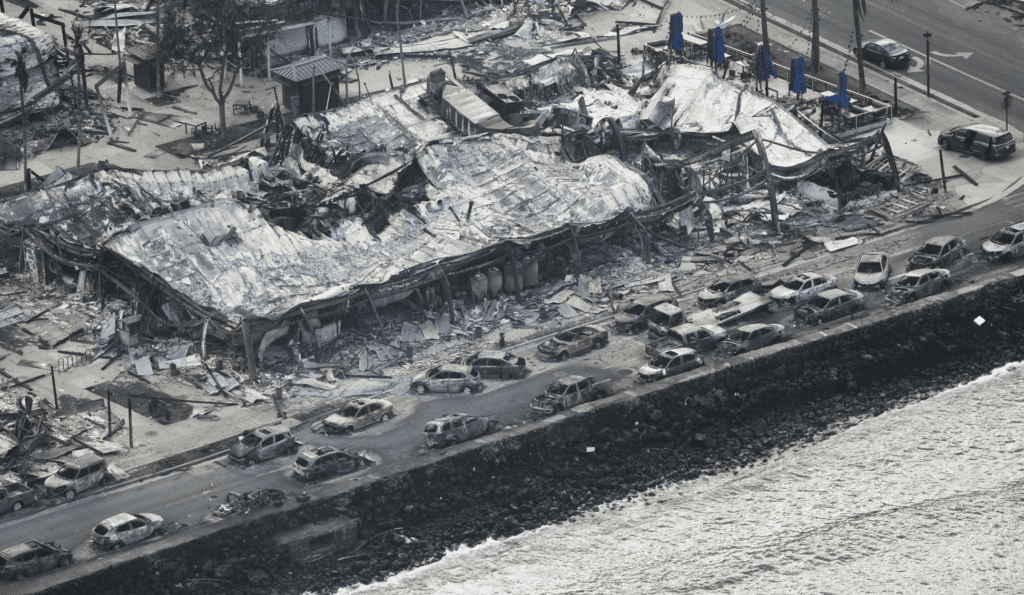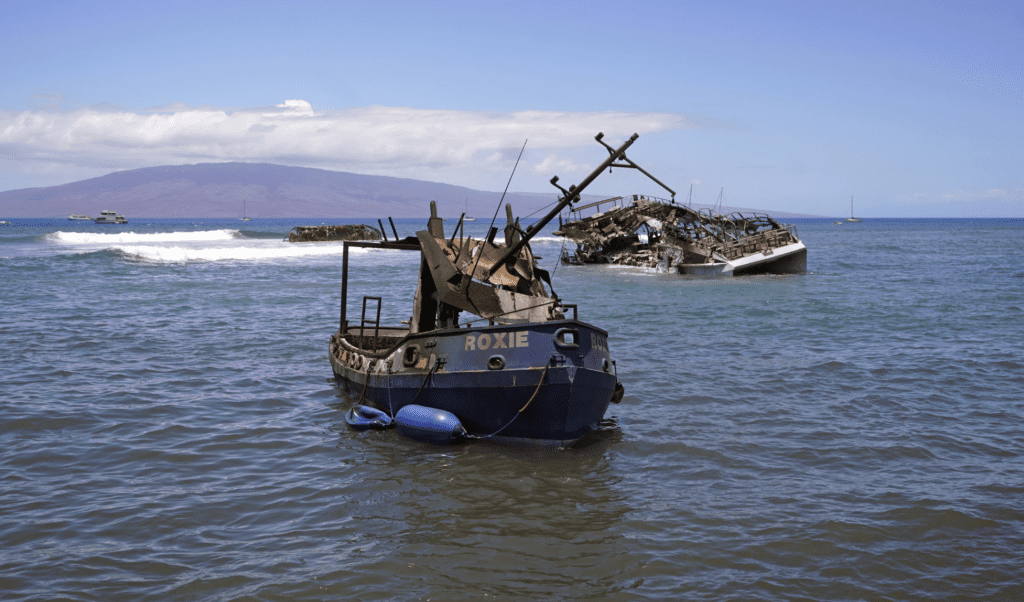As The Fires Die Out In Maui, Greedy Developers Salivate
Albee Layer and Matt Meola provide first-hand care and a forward-thinking perspective on the Lahaina fires.
It’s been nearly 10 days since a fire engulfed much of Maui’s west coast, flattening Lahaina and its surrounding towns, and killing over 100 people (and counting).
Since that time, we’ve gotten a clearer picture of how it went down, and what’s been happening since: Power lines down. Hurricane-force winds. “It’s way worse than you think”. Roads blocked. Locals helping locals.
Meanwhile, the rest of the world — especially those with a connection to Maui — wonders what they can do to help. Donating obviously helps, but is extra manpower needed?
According to Aquaman star and native Hawaiian, Jason Momoa, no.
“Maui is not the place to have your vacation right now,” the 44-year-old actor wrote. “DO NOT TRAVEL TO MAUI. Do not convince yourself that your presence is needed on an island that is suffering this deeply.”
Matt Meola and Albee Layer have been on the ground in Maui, working tirelessly to help their friends, family, and neighbors to get back on their feet. And they feel differently.
“In order for the rest of the island to take care of the people of Lahaina, we need the economy to thrive everywhere else,” Matt said. “Whether you like it or not, this island runs off tourism. Without people coming here, we’re fucked. And then everyone suffers.”
Local officials share Albee and Matt’s sentiment — because tourism accounts for four out of every five dollars made on the island, the Maui County mayor has not discouraged out-of-town visitors from coming. They say the rest of the island is open for business.
The question then becomes, what happens to the fire-ravaged west side and its long-time inhabitants?

“It’s so crazy,” Matt said. “It’s like nothing I’ve ever seen before.”
“All those stores and restaurants are gone,” said Albee, who spoke on the phone on his way to a surf camp for Lahaina kids at Hookipa. “Then you get into the neighborhoods that are just wiped out. It’s honestly hard to look at. Those neighborhoods had families that were there for a really long time. And a lot of people didn’t make it out.”
More than a week after the fact, many west-side locals are still camping or staying in rentals or hotels near Lahaina. Albee’s parents, who live on the other side of the island, were absent but opened the door for former pro Granger Larsen and his family. But many didn’t get help, and the horror stories floating around Maui are haunting.
“Picture the worst story you can imagine, that shit was happening,” Matt said. “The power lines were down, traffic couldn’t get out. Cars were trapped. Fires started coming in on all sides. People couldn’t get out.”

On the other side of the island, Matt spent two days defending the remains of his auntie’s house in Kula.
“I was putting out hot spots in her gulch and clearing trees around her art studio because that’s all she has left,” Matt said. “We were like, ‘Fuck, can’t let this burn down.’
“The ground is just so hot everywhere. Every half hour you see smoke coming out of the ground and it turns into little flames. The helicopters are here dumping water on everything. Lahaina is kinda already burnt out, but Kula has so much land that could ignite. It’s really sketchy out there.”
With limited vehicle access and cell service, Matt emptied his closet and adorned the displaced Hawaiians head-to-toe in Salty Crew. Then, with the help of their friend Chimo Shipp, a local fisherman who runs a fresh fish delivery service, Matt and Albee drained a gas station nearly dry to buy fuel for people’s generators and cars. The group spent $10 Grand at Costco and nearly $8,000 on gasoline. On their second gas trip, they bought 1,500 gallons.
It’s not technically legal to travel with that much combustible liquid in a passenger vehicle, as Albee noted, but who’s going to stop them in a situation this dire? One gas station even gave them gift cards and propane. When Chimo went public asking for Venmo donations to cover the bills, thousands of dollars hit their phones. They ended up with so much they’re creating a foundation called Fresh Help Maui to divide the money among impacted families
“It’s going to be really cool because we know we have a foundation where we know where the money goes,” Albee said. “And we can give money straight to people who need it.”
After a week of blockades, the government reopened the Lahaina Bypass Road (which funnels cars east around the town) on Wednesday to allow public access to West Maui. Only first responders and federal and county officials were previously allowed onto the bypass road. The lingering toxic ash, chemicals and burning debris still perforates the air and water around Lahaina, which remains off-limits for most civilians.
But with the embers dying down, people are coming to grips with just how long it will take to recover from the disaster. The cost of rebuilding the infrastructure will be astronomical, and the island’s economy will likely take a hit as fewer tourists come to snorkel, dine and surf.

There has been an outpouring of support in the fire’s aftermath. Amazon czar Jeff Bezoz and his fiancé, who bought property in Maui last year, have pledged $100 million to relief efforts. But while the government and nonprofits may have good intentions in terms of rebuilding, the big wheels of bureaucracy will take a long time to get large developments underway.
That’s why Albee, Matt and many others are so concerned about raising enough money in the meantime — to pay for everyday needs that so many people have lost in one devastating moment. And more locals are worried that their most valuable asset — the land they own — might have to be sold if they want to make ends meet. The sting of gentrification has long been felt in Hawaii, but with land and cost of living so high, one hopes this doesn’t become a forced exodus at the hands of developers and wealthy out-of-state buyers.
“For a lot of these families, the land has been in their family for generations and it’s all they have to pass on to their kids,” Matt said. “Imagine you’ve been here forever. Your family sails here and you lose it all. The only little slice of this island that’s yours and you’re forced out of it. It’s really sad.”
Lahaina landowners have already received offers for their scorched parcels, so Hawaii’s Governor Josh Green is working to protect local landowners from opportunistic land buyers. He said the state government is considering acquiring the fire-affected areas in order “to protect it for our local people so it’s not stolen by people on the mainland.”
Matt doesn’t think the government buying their land is the solution. “That would be the worst case scenario — once the government gets a hold of the land, the people are never getting it back.”
Albee continued: “We want to get enough money from these people in whatever way we can so they don’t have to sell their land. Because that would suck. Lahaina will never look the same, but I hope it keeps most of what it once was.”
Here are a few places you can donate:
- Hawaii Community Foundation’s Maui Strong Fund
- The Maui Food Bank
- Lahaina Ohana Venmo
- Na Wahine Toa Foundation’s Maui Fires Fundraiser
- This spreadsheet contains numerous GoFundMe pages, community foundations, nonprofits and supply dropoff points.














Comments
Comments are a Stab Premium feature. Gotta join to talk shop.
Already a member? Sign In
Want to join? Sign Up